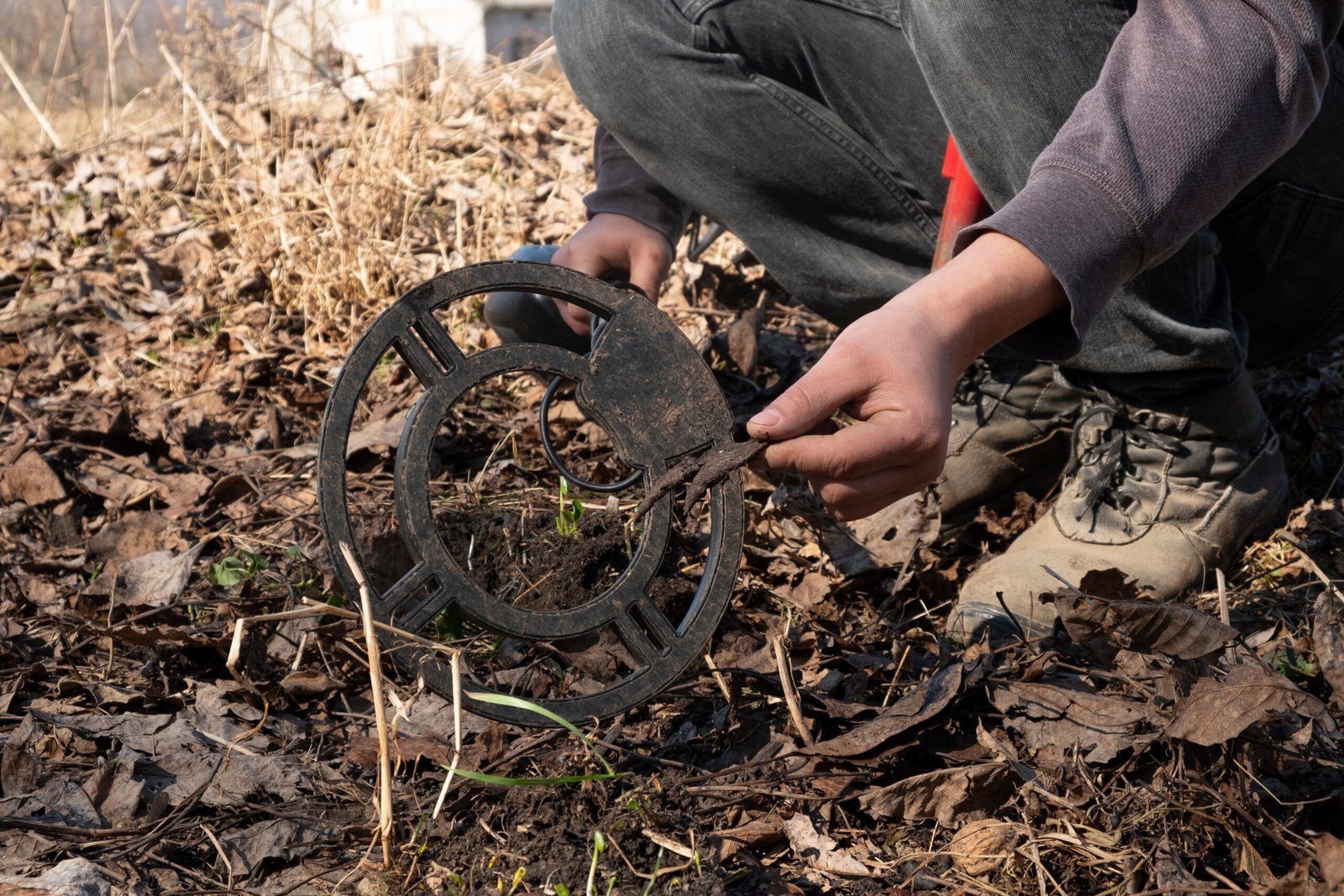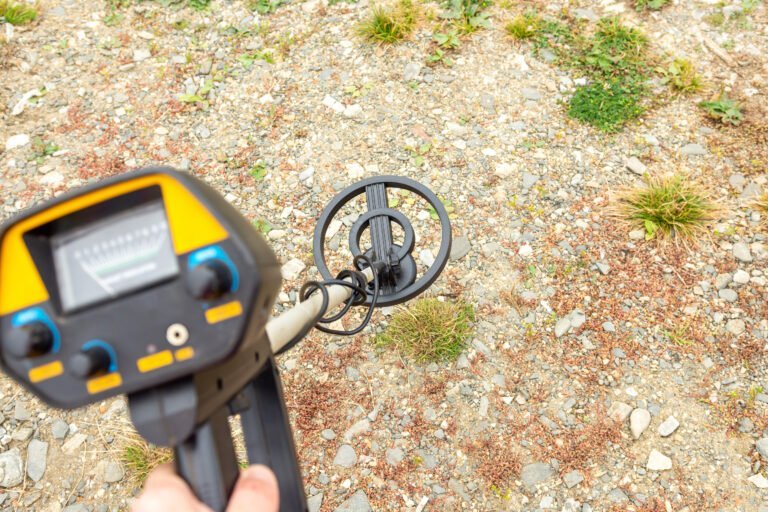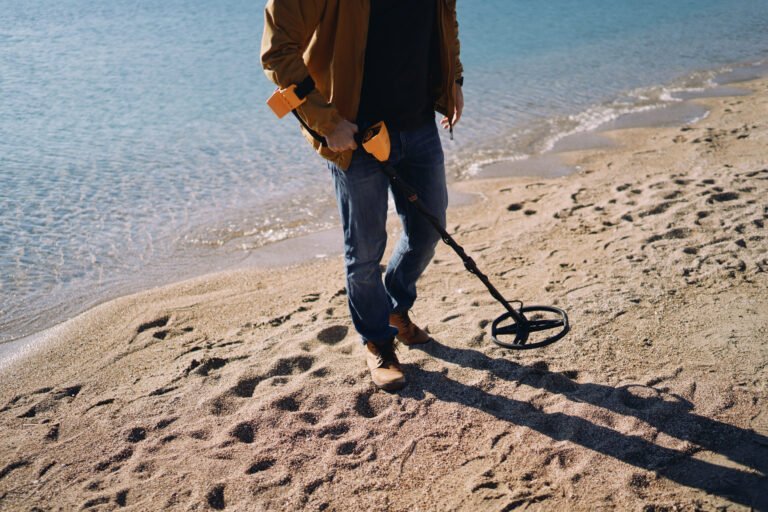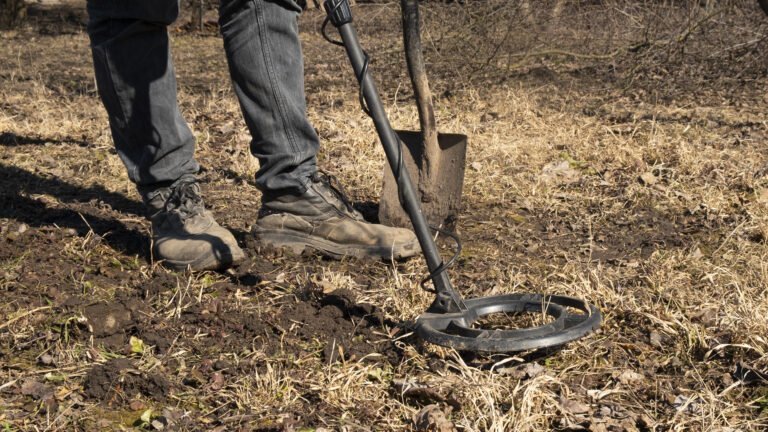Welcome to our guide on cleaning your metal detector to ensure optimal performance and longevity.
First Posted November 20, 2024 | Last Updated on September 26, 2025 by Ryan ConlonDisclosure: This Post Contains Affiliate Links; We earn a commission on purchases.
Regular cleaning is essential for removing dirt and preventing corrosion, allowing you to continue your treasure-hunting adventures with ease.
In this article, we will provide you with valuable tips and methods to effectively clean your metal detector and keep it in top shape.
Whether you’re a seasoned detectorist or a beginner, proper maintenance is crucial to maximize your metal detector’s capabilities.
By following these cleaning techniques, you’ll enhance its sensitivity and accuracy while preventing potential damage.
Key Takeaways:
- Regular cleaning helps maintain the optimal performance of your metal detector.
- Prevent dirt and corrosion from affecting your metal detector’s sensitive components.
- Cleaning old coins requires gentle scrubbing with baking soda or hydrogen peroxide solutions.
- To remove rust, soak the metal in distilled white vinegar and gently scrub with a soft-bristled brush.
- Eliminate mineralization on metal finds by using household cleaning agents like lemon juice or white vinegar.
How to Clean Old Coins Found with a Metal Detector
Coins found with a metal detector often require cleaning to remove dirt and develop a natural patina. Cleaning old coins is a delicate process that requires special care to preserve their value and condition. Here are some best practices for cleaning old coins:
Gentle Soaking Method
One common and effective method for cleaning old coins involves gentle soaking in a solution of baking soda or hydrogen peroxide. Here’s how to do it:
- Prepare a solution by mixing one part baking soda or hydrogen peroxide with distilled water.
- Place the coins in the solution and let them soak for a few minutes.
- Gently scrub the coins with a soft-bristled toothbrush to remove any dirt or debris.
- Rinse the coins thoroughly with distilled water to remove any residue.
- Dry the coins carefully using a soft cloth or air-drying them.
Note: It’s essential to handle the coins with clean, dry hands and avoid touching them directly to prevent damage caused by oils and moisture.
Expert Tip: If the coins are heavily soiled or corroded, it’s advisable to seek advice from a professional coin dealer or numismatist before attempting any cleaning methods.
Preventing Damage and Protecting Value
When cleaning old coins, it’s crucial to remember that harsh cleaning methods or abrasive materials can damage the coins and diminish their value. Here are some additional tips to protect the coins:
- Avoid using cleaners with chemicals, solvents, or abrasive agents.
- Handle the coins carefully, holding them by the edges to prevent fingerprints or smudges.
- Use a soft-bristled toothbrush or a washable microfiber cloth for gentle scrubbing.
- Never rub or scrub the surface of a coin vigorously.
Preserving the Patina
The natural patina on old coins contributes to their historical and aesthetic value. Overcleaning can remove or damage this patina. Here’s how to preserve the patina:
- Clean the coins sparingly and only when necessary.
- Avoid excessive scrubbing or abrasive cleaning methods.
- Store the coins in properly designed coin holders or albums to protect them from environmental factors.
| Cleaning Method | Effectiveness | Precautions |
|---|---|---|
| Gentle soaking | Effective for light dirt and debris | Avoid prolonged soaking to prevent damage |
| Soft-bristled toothbrush | Can remove stubborn dirt with caution | Use a brush specifically kept for coin cleaning |
| Air-drying | Safe and effective for moisture removal | Ensure coins are completely dry before storage |
By following these cleaning methods and precautions, you can safely clean your old coins detected with a metal detector. Remember, if you are uncertain or dealing with valuable coins, it’s always best to consult with an expert before proceeding.
How to Remove Rust from Metal Detected by Your Metal Detector
If you frequently use your metal detector at the beach or in environments with high humidity, you may encounter rust on the metal items you discover. Rust not only detracts from the appearance of your finds but can also impair their functionality. Luckily, there are effective methods to remove rust and restore the metal’s condition. One of the most reliable techniques is to use distilled white vinegar and a soft-bristled brush. Here’s how:
- Begin by filling a container with enough distilled white vinegar to completely submerge the rusted item.
- Place the metal object in the vinegar solution and let it soak for about 24 hours. This extended soaking time helps to loosen and dissolve the rust.
- After the designated time has passed, use a soft-bristled brush to gently scrub the rusted areas. Be sure to apply light pressure to avoid damaging the metal’s surface.
- If necessary, repeat the soaking and scrubbing process until all the rust is removed. For heavily rusted items, you may need to repeat the process multiple times.
- Once the rust is removed, thoroughly rinse the metal item with clean water to remove any remaining vinegar residue.
- Dry the metal thoroughly with a clean cloth or towel to prevent any new rust from forming. It’s essential to remove all moisture to ensure the metal’s longevity.
Safety Precautions:
While using vinegar to remove rust is generally safe, it’s important to take some precautions:
- Wear gloves to protect your hands from prolonged contact with vinegar.
- Ensure you are working in a well-ventilated area to avoid inhaling the vinegar fumes.
- If you have sensitive skin, consider using additional protective clothing, such as long sleeves and pants.
The Benefits of Using Vinegar:
Vinegar is an excellent cleaning agent for rust removal due to its acidic properties. It works by breaking down the rust, making it easier to remove. Additionally, vinegar is a natural and cost-effective alternative to harsh chemicals often used in rust removal products.
Using vinegar to remove rust from metal detected by your metal detector is an effective and environmentally friendly solution. It can be used on various types of metals, including iron, steel, and aluminum. Remember to always exercise caution and follow the safety precautions mentioned to ensure a successful and safe cleaning process.
How to Eliminate Mineralization from Metal Detecting Finds
When metal items have been buried for a long time, they can develop mineral deposits that obscure their true beauty. However, with the right cleaning methods, you can remove mineralization and restore the original appearance of your metal detecting finds. Here, we will explore the best practices for eliminating mineralization and keeping your detectors clean.
The Power of Household Cleaning Agents
Household cleaning agents like lemon juice or white vinegar can work wonders in removing mineralization from metal items. These common ingredients contain acid that helps break down the mineral deposits, making them easier to remove. To use this method, follow these steps:
- Prepare a solution by mixing equal parts lemon juice or white vinegar with water.
- Place the metal item in the solution and let it soak for a few minutes.
- Use a soft-bristled brush or cloth to gently scrub the item, focusing on areas with visible mineralization.
- Rinse the metal thoroughly with clean water to remove any residue.
- Dry the item completely to prevent new mineralization from forming.
By following these simple steps, you can effectively eliminate mineralization from your metal detecting finds using common household cleaning agents.
Caution: Strong Acid Cleaners
Although stronger acid cleaners can be effective in removing mineralization, they must be handled with caution. These cleaners, such as muriatic acid or citric acid, can be corrosive and may cause damage to both the metal item and your skin. Therefore, it is essential to:
- Read and follow the instructions provided with the cleaner carefully.
- Wear protective gloves and goggles to prevent any contact with the cleaner.
- Work in a well-ventilated area to avoid inhaling fumes.
- Rinse the metal thoroughly after using the cleaner to remove any residue.
- If necessary, repeat the process until the mineralization is completely removed.
Remember, safety should always be your top priority when using strong acid cleaners to eliminate mineralization.
How to Remove Tarnish from Metal Detected by Your Metal Detector
Tarnish can develop on metal items found with a metal detector, such as older US quarters made of silver. To remove tarnish, follow these steps:
- Create a warm water and dish soap solution: Fill a basin or sink with warm water and add a few drops of mild dish soap.
- Gently scrub with a microfiber cloth: Dip a soft microfiber cloth into the soapy solution and gently scrub the tarnished metal item.
- Rinse with clean water: After scrubbing, rinse the metal item with clean water to remove any soap residue.
If the metal item is heavily tarnished, you can try the following method:
- Prepare a boiling solution of water and baking soda: In a pot, bring water to a boil and add a tablespoon of baking soda for every cup of water used.
- Boil the tarnished item: Place the tarnished metal item in the boiling solution and let it simmer for a few minutes.
- Remove and scrub: Carefully remove the item from the solution and scrub it gently with a microfiber cloth to remove the remaining tarnish.
- Rinse and dry thoroughly: Rinse the metal item with clean water and dry it thoroughly with a soft cloth.
Remember to avoid using harsh polishes or abrasive materials that may cause damage to the surface of the metal. The gentle cleaning methods described above should help restore the appearance of your metal items without causing any harm.
“A little bit of cleaning can go a long way in restoring the beauty of tarnished metal items found with your metal detector.”
For a visual representation of the tarnish removal process, refer to the table below:
| Step | Description |
|---|---|
| 1 | Create a warm water and dish soap solution. |
| 2 | Gently scrub with a microfiber cloth. |
| 3 | Rinse with clean water. |
| 4 | Prepare a boiling solution of water and baking soda. |
| 5 | Boil the tarnished item. |
| 6 | Remove and scrub. |
| 7 | Rinse and dry thoroughly. |
Tips for Cleaning and Maintaining Your Metal Detector
Regular cleaning and maintenance of your metal detector is crucial for optimal performance. By following these cleaning tips for home detectors and detector maintenance tips, you can ensure that your metal detector remains in top shape and continues to provide accurate results:
- Wipe down after each use: After each detecting session, make sure to wipe down the search coil and control housing with a damp cloth. This will remove any dirt or debris that may have accumulated during your search.
- Thorough cleaning: For a more thorough cleaning, use a mild soap and water solution to clean the search coil and control housing. Avoid using harsh chemicals or abrasive materials as they may damage the detector. Rinse with clean water and dry completely before storing.
- Store in a cool, dry place: After cleaning, it’s important to store the metal detector in a cool, dry place. This will help prevent moisture and humidity from causing damage or corrosion.
- Regular inspections: Regularly inspect your metal detector for signs of damage or wear and tear. Check for loose or frayed wires, cracks in the casing, or any other issues that may affect performance. Address any problems promptly to avoid further damage.
Remember, proper cleaning and maintenance will not only extend the lifespan of your metal detector but also ensure accurate and reliable results during your treasure-hunting adventures!
Conclusion
Proper cleaning and maintenance of your metal detector is vital for its longevity and optimal performance. By following the tips and methods provided in this guide, you can keep your metal detector free from dirt and corrosion, ensuring seamless treasure hunting experiences.
But don’t forget about the other detectors in your home! It’s equally important to clean and maintain smoke detectors, carbon monoxide detectors, and gas detectors to ensure the safety of your household.
Regularly inspect and clean these devices according to their manufacturer’s instructions. For smoke detectors, test the batteries monthly and replace them at least once a year. Remove dust or debris by gently vacuuming or using a soft, dry cloth. Carbon monoxide detectors should be tested weekly, and their sensors should be replaced following the manufacturer’s guidelines. Keep gas detectors clear of any obstructions and maintain proper ventilation in the area where they are installed.
By taking these necessary steps, you can have peace of mind knowing that your detectors are functioning properly and are ready to protect you and your loved ones. Stay safe and happy hunting!
Source Links
- https://highplainsprospectors.com/blogs/metal-detecting-topics/how-to-properly-clean-and-preserve-metal-detector-finds-part-2-stages-of-the-cleaning-and-preservation-process
- https://panckydetectors.com/blogs/pancky-tips/how-to-clean-your-metal-detecting-finds
- https://treasurecoastmetaldetectors.com/blogs/news-1/keeping-your-metal-detector-clean-and-why-its-important

Meet Ryan Conlon, the passionate owner and driving force behind Pan for Treasure.
With an unwavering love for the art of gold panning, Ryan has transformed his enthusiasm into a thriving community hub for fellow treasure seekers. info@panfortreasure.com
A seasoned gold panning enthusiast, Ryan’s journey began with a simple pan and a dream, evolving into a deep appreciation for the history, geology, and thrill of uncovering precious metals.
Subscribe to Our Newsletter







